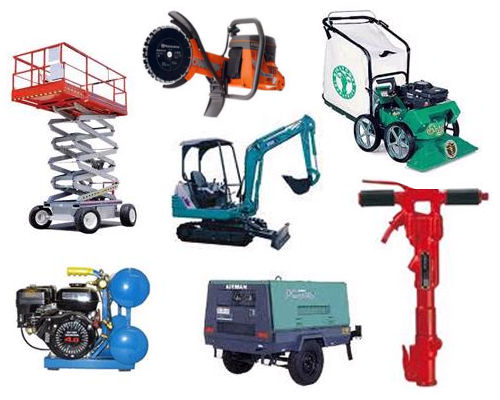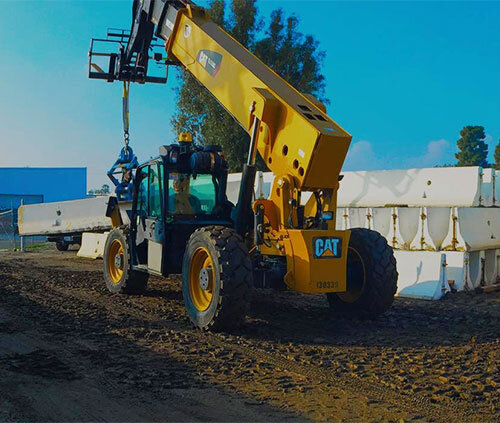Heavy Equipment Rental: Huge Machinery for Any Kind Of Construction Task
Heavy Equipment Rental: Huge Machinery for Any Kind Of Construction Task
Blog Article
Maximize Your Budget by Recognizing the Costs Associated With Building And Construction Devices Services
Comprehending the full range of costs connected with building tools rentals is vital for optimizing your budget. What approaches can be used to properly take care of these expenses and guarantee a more efficient rental experience?
Overview of Rental Expenses
When considering construction devices leasings, understanding the linked prices is paramount for reliable budgeting and task preparation. Rental prices can differ substantially based on a number of elements, including devices kind, duration of rental, and location. The first rental fee commonly shows the tools's market demand and its connected operational abilities, influencing the total expenditure.
Along with the base rental price, secondary expenses may emerge, such as transport fees, gas additional charges, and upkeep costs. It is vital to make up these additional expenses to properly assess the overall cost of renting out equipment. In addition, the rental duration can influence pricing; longer leasings may receive affordable prices, while temporary leasings could sustain greater daily charges.

Failure of Rental Rates
A thorough understanding of rental prices is important for service providers and project supervisors aiming to optimize their spending plans. Rental prices for building and construction equipment normally contain several components, consisting of base rates, time-based costs, and usage costs.
Base rates are the core fees connected with the rental of the equipment, usually determined by the type and size of the machinery. These prices can differ dramatically, affected by aspects such as devices need, schedule, and regional market trends. Time-based fees, which may be daily, weekly, or monthly, offer to fit various job timelines and rental durations.
Additionally, rental prices might consist of usage fees, which are applicable when devices is made use of beyond a defined threshold, ensuring that the rental business can represent deterioration. Seasonal need changes can also impact rental rates, with peak building periods commonly commanding greater prices.
In addition, understanding the rental company's plans concerning upkeep and insurance coverage can give additional insight right into the overall expense framework. By evaluating these parts, professionals can make enlightened decisions, making certain the selection of rental tools straightens with both project needs and budget restraints.
Additional Costs to Take Into Consideration
Comprehending the intricacies of extra charges is vital for specialists to manage their total leasing expenses efficiently. Past the common rental rates, numerous extra fees can dramatically impact the overall cost of equipment leasing. These fees typically include shipment and pick-up costs, which can vary based on distance and logistics entailed in moving the tools to and from the task website.
Furthermore, some rental firms might enforce gas surcharges if the equipment is returned with much less gas than when leased. It is also important to recognize prospective cleaning charges, specifically for specialized tools that needs detailed maintenance after usage.

Completely assessing the rental arrangement and clearing up these added charges upfront can help contractors guarantee and avoid unanticipated expenses that budgets continue to be intact throughout the task lifecycle.
Maintenance and Repair Service Costs
Regular upkeep and repair expenditures are typically overlooked variables that can dramatically influence the general cost of building and construction equipment leasings. When renting tools, it is essential to take into consideration not only the rental charges yet also the possible costs linked with maintaining the machinery in ideal operating problem.
Many rental firms include fundamental upkeep as component of the rental agreement; nevertheless, extra unforeseen malfunctions or extensive repair work can bring about additional expenses. It's vital to assess the rental contract carefully to recognize what maintenance services are covered and what responsibilities fall on the tenant.
Moreover, devices that is not well-kept can cause ineffectiveness on the task site, potentially increasing and triggering hold-ups job expenses. To alleviate these dangers, it is recommended to carry out regular evaluations and preserve open communication with the rental company pertaining to any kind of concerns that emerge throughout use.
Insurance Coverage and Liability Expenses
Insurance coverage and obligation costs are crucial components that can significantly impact the overall expense of building and construction tools leasings (forklift rental). These prices make certain that both the rental firm and the customer are secured from potential economic losses developing moved here from accidents, damage, or theft throughout the rental period

Additionally, customers should understand any deductibles or exemptions in the insurance coverage, as these can affect prospective out-of-pocket expenses. Comprehending the terms of any insurance policy protection is crucial to stay clear of unexpected costs. Eventually, budgeting for insurance and responsibility costs can aid guarantee a smoother rental experience and protect against financial risks related to building and construction tasks.
Final Thought
In conclusion, an extensive understanding of the costs associated with building and construction tools leasings is essential for effective spending plan administration. Eventually, notified decision-making regarding tools leasings contributes to the general success of construction endeavors.
Rental prices can vary considerably based on several aspects, including equipment type, period of rental, and payloader rental near me place (rental company near me). The rental period can affect prices; longer rentals may certify for discounted prices, while short-term rentals could sustain greater day-to-day costs
By carrying out comprehensive study and engaging with trusted rental business, professionals can effectively navigate the intricacies of rental prices, inevitably maximizing their monetary resources.
Past the basic rental prices, various extra charges can substantially influence the overall price of equipment service. Rental companies typically provide liability insurance policy that covers injuries to third events or damages to home, while equipment damage insurance coverage can cover the expense of fixings or replacement if the leased equipment is damaged.
Report this page